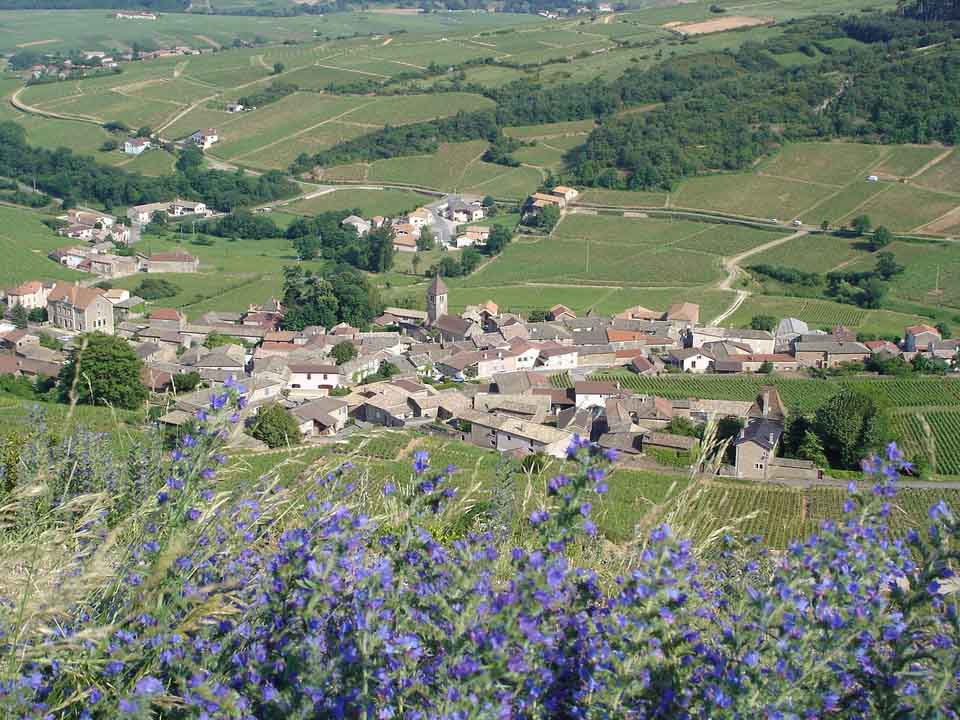
The world of wine can be a bit daunting for beginners, partly because there are hundreds of grapes, many wine classifications, different vinification processes and countless place-names to remember. Even fairly experienced wine enthusiasts get some of the place-names mixed up. Let’s take for example, two classic French wines, Pouilly-Fuissé and Pouilly-Fumé. If you are not sure which is which, don’t worry, because you certainly aren’t the first and almost certainly won’t be the last.
It doesn’t help that both wines have similar names, equally tricky to pronounce if you don’t speak French. They are both white and come in similar-looking bottles but apart from than they have absolutely nothing in common and their home-lands are hundreds of miles apart. They are in fact, as different as sedimentary carbonate rock and coagulated milk.
Pouilly-Fuissé is pronounced poo-yee fwee-SAY and it comes from Burgundy, one of my favorite regions of France with its gently rolling hills and its evocative village names that resonate in the minds of any wine enthusiasts. Burgundy is the spiritual home of the Chardonnay grape, where it’s used to make some of the finest white wine in the world. Pouilly-Fuissé is made only from Chardonnay and comes from a sub-region of Burgundy known as the Mâconnais. It lies in the southern part of the region and takes its name from the ancient city of Mâcon. Pouilly-Fuissé comes from a handful of communes which include the villages Solutré-Pouilly and Fuissé which of course, give the wine its name. Although they’ve been making wine here for centuries, the legal appellation Pouilly-Fuissé was created in the 1930s. And incidentally, Georges Duboeuf, the founder of one of the largest wine merchants in France, was born in this region.
In some ways, Pouilly-Fuissé is a classic Burgundy and the best examples invariably have a greenish-gold appearance with those enticing aromas that you associate with a cool-climate Chardonnay; hints of acacia blossoms, citrus fruit and underlying aromas of melon, pear or almond. There’s sometimes a buttery, honeyed kind of aroma too. Pouilly-Fuissé is usually rounder and richer in body than Chablis and to my mind makes an excellent food wine for light white meat dishes such as lemon chicken or with veal, shrimps or sea bass. The good news is that Pouilly-Fuissé is often a good deal cheaper than some of its more illustrious Burgundian neighbours. The other day, I did a virtual tour around the country roads of the area using the wonderful Google Street View application. It was reassuring to see that those quiet country lanes among the vineyards have hardly changed since the days I used to drive along them in the 1980s.
If you were to drive about three hundred miles to the north-west, you’d arrive, sooner or later somewhere near the eastern end of the Loire Valley and the home of our other wine, Pouilly-Fumé. It’s pronounced a bit like poo-yee FOO-may, with the French “u” sound for the “OO”. The wine is made entirely from Sauvignon Blanc which of course gives an entirely different character to a wine made from Chardonnay. When the grapes are ripe, the skins have a greyish bloom. The locals often refer to “white smoke” to describe the type of vine or the wines made from it. The word fumé also refers to the smoky bouquet that sometimes comes with the wine. Pouilly-Fumé originates in the town of Pouilly-sur-Loire and a bit further upstream on the opposite bank of the river lies the town and wine region of Sancerre which produces a wine of the same name. It too is made exclusively from Sauvignon Blanc and has a similar taste profile to Pouilly-Fumé. And by the way, there’s another wine produced in the region called Pouilly-sur-Loire, but it’s unrelated to Pouilly-Fumé and made from the Chasselas grape.
Although Pouilly-Fuissé is probably the more famous of the two, Pouilly-Fumé has many admirers especially those who enjoy the crisp, biting acidity of Sauvignon Blanc. Pouilly-Fumé tends to be cheaper too. Many wine enthusiasts believe that the conditions in the Loire Valley bring out the natural qualities of Sauvignon Blanc. In contrast to those of New Zealand which often carry grassy and tropical fruit aromas, Loire wines are “flintier” and finely etched, with definite citrus or apple aromas and generous acidity. They have flinty aromas too, sometimes described as “gun smoke” and their mineral-driven qualities reflect the region’s rocky, pebbly soils in which the grapes are cultivated. Depending on the vinification process, some Pouilly-Fumé are richer than others. These crisp, dry wines make excellent partners for prawns, oysters, veal and indeed most kinds of seafood. They would work well with fish fillets served in a creamy sauce because the natural acidity in the wine would make a pleasing contrast.
But is there an easy way to avoid mixing up these names? I find that mental association often works well. For example, you could remember Pouilly-Fumé by imagining being in a boat on the River Loire smoking a cigar. However, mental associations are more effective when you devise your own. The more amusing or bizarre the better, because you’re more likely to remember them. I shall therefore leave that interesting task to you. If that is, you think it’s worth the bother.
 |
 |
 |





